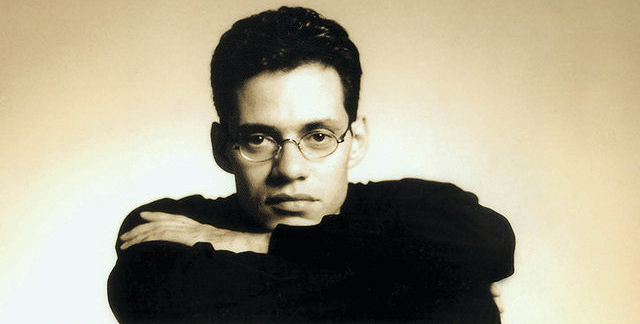20 years ago, an up and coming musical phenom by the name of Marc Anthony was filling New York City salsa clubs like The Copa, Les Poulet, The Sequoia Club and Latin Quarter. It was the mid to late 90’s, and he had a monster collab with La India, and two albums under his belt, Otra Nota and Todo a Su Tiempo, the latter of which was his biggest album to date. That is until October 21, 1997 when Marc Anthony released his next album – Contra la Corriente – an album that would launch the Nuyorican into Salsa superstardom. On this the 20th anniversary of the album’s release we take a look at the making of the album, the hit singles it spawned and the impact it had on Latin music.
The Making Of
It was Anthony’s third studio album on Salsa Svengali Ralphie Mercado’s RMM Records. The album was produced by Puerto Rican musician Angel “Cucco” Pena, and if that name sounds familiar it’s because Anthony frequently gives “ataque Cucco” shout outs to the producer on his albums. Most of the songs, however, were written by famed Panamanian composer Omar Alfano (Victor Maneulle, Gilberto Santa Rosa). In an interview with the Los Angeles Times Anthony, shared that “I picked those nine tunes after listening to 1,300 of them, so I knew [they] would work.”
Interestingly enough, and perhaps not widely known. During the time Anthony was recording the album, he was also involved in production for the Paul Simon musical The Capeman. In order to record the album, he had to pull double duty and if that weren’t enough they were on a tight time frame.
On making the album, he shared, “it was a time crunch, I built a studio in my house and got musicians to come and play. I would send the tapes to [co-producer] Cucco Pena in Puerto Rico and get his feedback over the phone. And we got it done. It was awkward and different and exhausting…I never felt more vulnerable than while I was making it.”
The Songs
Back before the music industry turned to the singles driven format it is today, it was customary for an artist to release an album then several singles off of it with the hopes of scoring a few hits to increase sales. You had a mega album on your hands if you scored four or more hits. Contra la Corriente – it would spawn six hit singles.
“Y Hubo Alguien” was the lead single and released the same month as the album. It was an immediate hit and earned the distinction of reaching number one on the Hot Latin Tracks and was the first single by a salsa musician to do so. The next single “Me Voy a Regalar” followed later in the year, with the third single “Si Te Vas” releasing in 1998; reaching number-eight on Hot Latin Tracks.
The title track “Contra la Corriente” and “No Me Conoces” would follow both reaching number-two on Hot Latin Tracks, with the final single “No Sabes Como Duele” released from the album in 1999. Of note, was that Anthony only made videos for two of the singles, the lead track “Y Hubo Alguien”, and the power ballad “No Me Conoces”, which would co-star his future wife and collaborator Jennifer Lopez. Why is that noteworthy? Because it was a time when music videos were still actually played on television and used as vital promotional tools for singles – to release a single without a video to accompany it meant the single could languish. For an album to produce six hits, with only two videos was all the more impressive.
The Legacy
At the time of release, the album was generally well received by critics who praised the vocals of Anthony as well as the songs. Contra la Corriente became the first salsa album reach number one on the Top Latin Albums chart and to chart on the Billboard 200. The album received a gold certification for shipping of 500,000 copies in the United States.
Awards season was just as kind, as the album received a Grammy Award and a Latin Billboard Award, and was named the eighth best album of 1997 by Time magazine, who aptly stated that “…whether you habla espanol or not, Anthony’s talent comes through, no translation needed.”
Yet, perhaps most important was the impact the album had on fans, in particular U.S. Latinos who were coming of age during the 90’s. It was an album that played at weddings, summer street fairs, house parties and opened the musical pallet beyond hip-hop, pop and freestyle music which until then dominated the clubs and airwaves.
Salsa’s renaissance was in full effect and Marc Anthony was its pied piper.

